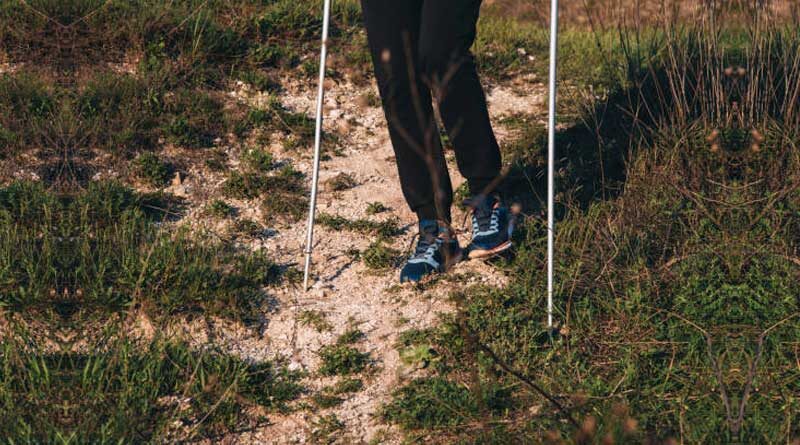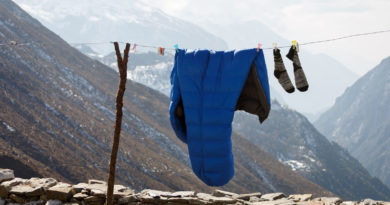How to Protect Toes while Hiking Downhill?
Hiking downhill can present an entirely new set of challenges even for the most seasoned hikers. When you are trekking on a decline, your toes are taking on a massive amount of impact, which leads to quite a tremendous amount of pain and discomfort. Failure to adequately protect your toes not only leads to a severe amount of pain, but it can also cause you to lose your toenails.
Fortunately, there are many ways that you can protect your toes even when hiking downhill. Knowing these tips will help to ensure that you aren’t putting any unnecessary impact on stress on your toes.
Wear the right Hiking Boots
Everything starts with having the right pair of boots. It ensures that your hike doesn’t leave your toes bruised and in pain. Having a pair of sturdy boots will ensure that you are getting the highest possible amount of protection and security. Boots meant for thru-hiking or trail running usually don’t provide enough support and security. Therefore, it is always best to work with a hiking boot that is suited to heavier and more intense treks. It also helps to choose a pair that is about half a size larger than your standard shoe size.
Lace them up properly
You can do everything right – choose the right boots, buy the best insoles, and finding the best socks, but if your shoes aren’t laced properly, you are going to notice adverse effects. Lacing your boots wrong can make all of the above efforts useless. Improper lacing can cause your foot to slide forward, which is one of the most significant causes of damage to your toes or toenail loss. It is crucial to make sure that your boots are laced tightly and securely.
Break-in your Boots
If you just purchased a new pair of hiking boots, you will want to break them in a bit before heading out on a downhill hike. Your foot needs to get used to the fit of your hiking shoe. The best way to break in a new pair of boots is by wearing them for a while. Wear them in the house, to the grocery store, for a walk around the neighborhood. Keep them on until your feet begin to hurt, then take them off and allow your feet to rest for a bit.
Repeat this process several times. Each time you wear your boots, your feet will get more used to them. Eventually, you won’t feel any pain when you wear the shoes. Make sure to take note of any part of the boot that causes you particular pain. These hot spots can be alleviated by using the proper socks.
Have a good Arch Support
While new hiking boots typically have excellent arch support, this is not something that will last forever. Your arch support will decrease the more you wear your shoes. So, it is important to ensure that you are using a pair of hiking boots that still offer an adequate amount of support. Some will try to overcompensate the arch support by tying their boots tighter, but this is not the right fix. Shoes that are too tightly laced will increase the friction and cause your foot to slide more within the boot.
Use good Insoles
Having a good insole goes hand-in-hand with arch support. When you use the right insole, you will always have good support in the arch of your foot. It always helps to have an extra pack of insoles with you on your hike. If you are in the middle of your hike and feel like your feet are sliding around a lot and that your arch support may be compromised. It is always helpful to have an extra pair on hand to take care of the issue. Risking flat arch support is the equivalent of having poor-quality hiking boots. The result of inadequate support is extreme toe damage and even toenail loss.
Wear the best Socks
Having the right boots and the proper support is just as important to a great hike as a good pair of socks – or two! It is not only essential to have the right pair of socks, but it is also imperative to wear them the right way. Whatever you do, do not choose a pair of cotton socks to wear while you are hiking. Cotton absorbs and collects sweat while also taking a long time to dry. This means that you may be stuck with cold feet and soggy socks and boots on your hike.
When hiking downhill, it is always best to wear two pairs. The first pair that you put on is known as the inner sock. Believe it or not, it is best to wear these inside-out so that the seam along the toe faces away from your foot. This will ensure that there is no extra friction on tension rubbing against your toes as your hike. The second pair of socks, known as the outer sock, is the one that makes contact with your boot. You can wear these inside-out as well. Wearing two pairs will significantly reduce the amount of friction and stress experience by your toes during a downhill hike.
Pack an extra pair
Much like the insoles, it always helps to have an extra pair of socks. You have to prepare for anything while on a hike, and making sure that your feet are comfortable and protected should be your top priority. Bringing an extra pair of socks will ensure that you can continue with your hike no matter what you are faced with.
The Bottom Line
Downhill hikes present a fun and exciting challenge for any hiker! With a new set of challenges comes new ways to prepare and ensure that your hike goes well and that you are protecting your health. The most vulnerable part of your body during a downhill hike is your toes. So, it is imperative that you follow the tips above to ensure that you don’t do any unnecessary damage to your feet.




